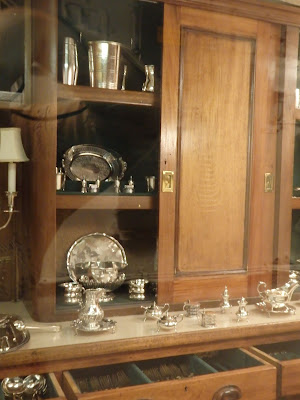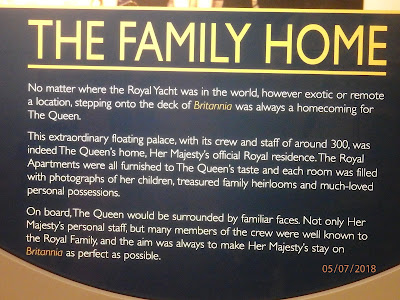 |
| The Royal Yacht Britannia was home to Her Majesty The Queen and the Royal Family for over 40 years, sailing over 1,000,000 miles around the world. Now berthed in Leith, on the outskirts of Edinburgh. |
 |
| Go to the official website; http://www.royalyachtbritannia.co.uk/ for a great photo of the ship. |
 |
| Britannia's set of signal flags. These flags can be used as signals with each flag representing a letter but individual flags have specific and standard meanings. |
 |
| Britannia was updated with satellite navigation technology during its duties. |
 |
| The officers dined together in the Wardroom. This could be a quite formal affair with rituals and tradition. |
 |
| There was a special china pantry... |
 |
| and a silver pantry |
Many political leaders stepped aboard the impressive vessel to dine with the Queen, including Sir Winston Churchill, Rajiv Ghandi, Margaret Thatcher, Boris Yeltsin, Ronald Reagan, and Bill Clinton.
 |
| Displayed on the walls were various items collected by the Royal Family on their journeys. |
 |
| The state drawing room was used for official entertaining as well as for family gatherings. Its entertainment facilities include a baby grand piano, reportedly played by Noel Coward and by Princess Diana, as well as a television hidden in one of the cabinets. |
 |
| The tender used to transport the royals to the yacht. |
 |
| We had lunch on the yacht and I had to try Irn Bru, Scottish soft drink. |





































No comments:
Post a Comment